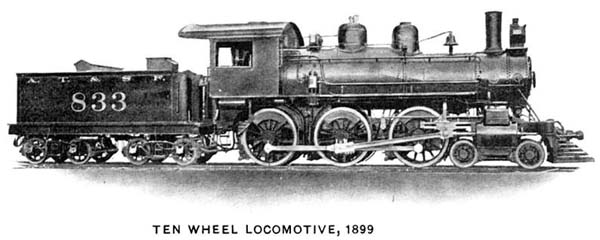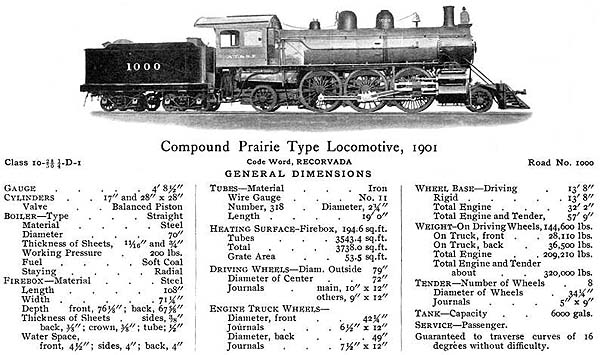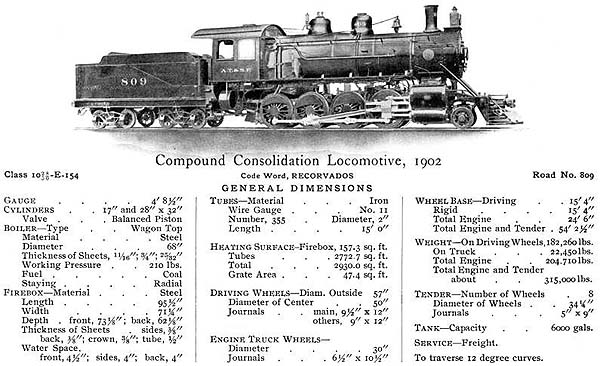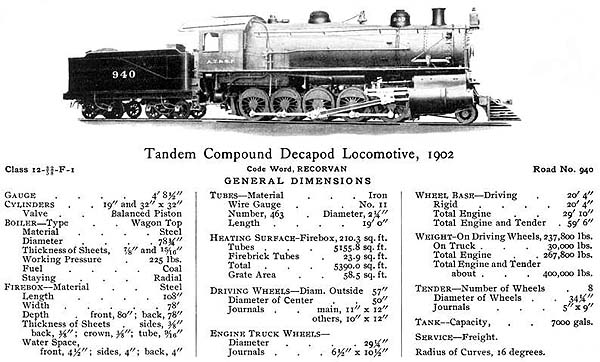|
Fifteen ten-wheel locomotives were constructed in 1899. The illustration on page 10 (above), of engine 833, shows their general features. The frames were of cast steel. These locomotives had cylinders twenty inches in diameter by twenty-six inches stroke, the diameter of the driving wheels being sixty-nine inches and the steam pressure 18o pounds; thus giving them a tractive power of 23,000 pounds. The boiler was of the wagon top type, sixty inches in diameter. It contained 262 tubes, two inches in diameter and fourteen feet three inches long, the firebox being 102 inches long by forty and one-quarter inches wide. The grate area was twenty-eight and five-tenths square feet. The heating surface of the firebox was 167, and of the tubes 1942 square feet: thus giving a total of 2109 square feet. The total weight was 155,6io pounds, the weight on driving wheels being 120,410 pounds. The tank capacity was 5000 gallons. In June, 1901, Mr. J. W. Kendrick accepted the position of third vice-president of the Santa Fe System. Mr. Kendrick's wide experience in various branches of railway work enabled him to deal successfully with the problems which, at this time, confronted the various operating departments and especially the question of selecting suitable motive power for handling the constantly increasing traffic. From this time on the weight and power of all classes of locomotives built for the Santa Fe rapidly increased, and the advantages of using compound locomotives were clearly recognized. The wide firebox was introduced on road engines, the Santa Fe thus being quick to recognize its advantages. In 1901, the Baldwin Locomotive Works built fifty Moguls for fast freight service, thirty-five of which were compound and fifteen single expansion, one of the latter is illustrated on page 11 (below)
|












 Early in the
same year the Decapod engine, illustrated on page 17 (see below),
was built and the locomotive weight-record was again broken. This
was the first tandem compound built at the Baldwin Locomotive Works.
It was followed in the latter part of 1902, by fifteen Vauclain
compound "Mikado" type engines.
Early in the
same year the Decapod engine, illustrated on page 17 (see below),
was built and the locomotive weight-record was again broken. This
was the first tandem compound built at the Baldwin Locomotive Works.
It was followed in the latter part of 1902, by fifteen Vauclain
compound "Mikado" type engines.